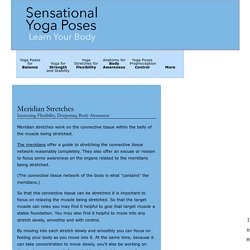

Tennis Ball Techniques for Tight Muscles. Imagine you have a friend small enough to fit in your purse or briefcase who will give you nightly massages, easing stress, fatigue, and muscle tension all for a onetime cost of about $3.

Think yellow. Think tennis balls. The procedure is simple: place a tennis ball on a part of the body that is sore or tight and rest your weight on it. The pressure softens tight muscles and increases circulation. Dancers have long used tennis ball self-massage to work out their kinked-up muscles, and body workers frequently prescribe the practice for clients healing from chronic injuries. We'll never share your info. Unlock the gluteals, lengthen the hamstrings and adductors, and restore balance to the muscles along the spine. Self-massage with tennis balls is greatly enhanced by stretching, which further increases circulation and reeducates the muscles to rest at a longer length.
We’ll start with a simple technique so you can get a feel for how this works before going on to more complex applications. 8 Signs of a True Soul Friend. A true friend is one soul in two bodies. – Aristotle What do you define as a “friend”?

Take a moment to think about your answer. Once upon a time people described true friendship as a connection between two fiercely loyal people who would give their lives for each other’s well-being. A true friend used to be thought of as a person who would stick with us through thick and thin; an alter-ego of sorts who we could confide in about anything and everything, and trust completely. Yoga Stretches for Improving Flexibility.
Meridian Stretches. Meridian stretches work on the connective tissue within the belly of the muscle being stretched.

The meridians offer a guide to stretching the connective tissue network reasonably completely. They also offer an excuse or reason to focus some awareness on the organs related to the meridians being stretched. (The connective tissue network of the body is what "contains" the meridians.) Meridian Stretches. Index. Understand and Prevent Shoulder Injuries. Each time you lift your arms, your shoulder muscles—both big and small—initiate a dance full of subtle nuances.

The complex interaction of those muscles, coupled with the unique structure of the shoulder joint, gives your arms a wide range of motion. In fact, the shoulder is one of the loosest joints in the body. But this freedom of movement comes at a price: shoulders are vulnerable to injury both from sudden falls and from repetitive action such as throwing a baseball.
Resolving Neck Tension. When we carry ourselves with the head thrust forward, we create neck pain, shoulder tension, even disc herniation and lower back problems.

A reliable cue to remind ourselves how to shift the head back into a more stress-free position would do wonders for resolving these problems, but first we have to know what we’re up against. When it comes to keeping our head in the right place, posturally speaking, the neck is at something of a disadvantage. There are a number of forces at work that can easily pull the neck into misalignment, but only a few forces that maintain the delicate alignment of the head on the spine, allowing all the supporting muscles to work in harmony. We'll never share your info. Spam just isn't yogic. Stretching the Piriformis: Seated Twists. Doug Keller eBook sciatica. Ultimate guide to yoga for healing. Stillness. 7 Poses to Soothe Sciatica.
Sciatica has a long (and painful!)

History. As far back as the 5th century BCE, doctors and sufferers alike have tried a host of imaginative remedies, from leeches and hot coals in Roman times to 20th-century use of creams and injections. The principle causes of sciatic pain are less mysterious than its heritage suggests, yet there are still millions who suffer from it. In 2005, the Journal of Neurosurgery: Spine estimated that more than 5 percent of the adult population in the United States suffers from sciatica, and over a lifetime, an individual has a 40 percent probability of experiencing it. But here’s the good news: in many cases, a mindful, targeted yoga practice can help you overcome the pain. Symptoms of Sciatica. How to Stretch and Strengthen the Psoas. Most yoga students are aware that the psoas is a central player in asana, even if the muscle’s deeper function and design seem a mystery.

Wrist Relief: 6 Poses for RSI (Repetitive Stress Injury) Our hands are one of our primary organs of action—we use them for basic survival, recreation, communication, even creative expression.

5 Simple Moves to Eliminate Low Back Pain for Good. An Extra-Comforting Sequence for Extra-Anxious Times. There's a stubborn part of me that would love to say that, as a yoga student, teacher, and writer, I never get anxious anymore—that yoga has cured me of all of my emotional ails—but this is not the case.

Rooting out negative thought processes, and uncoupling ourselves from their grip, is a day-to-day process. Choosing to face our feelings within the context of practice (whether that means practicing asana, chanting kirtan, or sitting in meditation) is a valiant effort, but it’s not always easy to do. At times, it can seem easier to enter our proverbial shells and cast distressing thoughts aside to deal with on "another day. " But in truth, if yoga teaches us anything, it's that feelings have a way of surfacing, whether we seek them out consciously or not. Choosing to face our feelings within the context of practice is a valiant effort, but it’s not always easy to do. Pick and choose which props you'd like to incorporate, or leave them out of the sequence entirely.